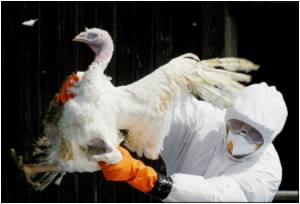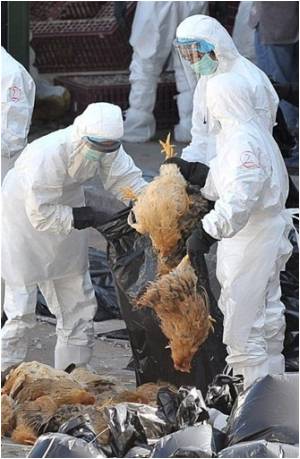A simple new method to better assess the risks posed by emerging zoonotic viruses, those transmissible from animals to humans, has emerged from a new study.

This study has important health policy implications because of the large numbers of people that could potentially be harmed by emerging viruses. Zoonotic viruses primarily cause occasional infections in human populations exposed to reservoir species (the animal species harboring the virus) because the pathogens are usually poorly adapted for sustained human-to-human transmission. However, zoonotic viruses are under strong selective pressure to acquire the ability for human-to-human transmission. Dr. Cauchemez and colleagues show that the novel approach described in this paper will be useful in assessing human-to-human transmissions during zoonotic outbreaks.
The researchers developed a mathematical model of disease transmission, which only requires data from routine surveillance and standard case investigations. They showed that the pandemic potential of a zoonotic virus could be estimated simply from the proportion of cases infected by the natural reservoir. The authors then applied their new approach to assess the human-to-human transmissibility of H1N1v, H1N2v and H3N2v viruses (in particular that of the H3N2v-M virus) from US surveillance data for the period December 2005 to December 2011 and Nipah virus in Malaysia and Bangladesh, as well as to a non-zoonotic pathogen Vibrio cholerae in the Dominican Republic. This study demonstrates the applicability of this novel approach to estimating the reproduction number R (or the number of individuals infected by a case), during zoonotic and certain non-zoonotic outbreaks.
The technique for estimating R described in this paper is simple and robust and does not require as much investigative effort as existing methods, say the authors. However, a key limitation of this new approach is that it is designed to estimate R during subcritical outbreaks. If it is not a subcritical outbreak, other methods are needed to estimate R.
Dr. Lyn Finelli, Surveillance and Outbreak Response Team (Influenza Division, CDC) and co-author on the paper said: "Outbreaks of the H3N2v-M virus largely took place at livestock exhibitions with thousands of visitors every day. It is very hard to perform detailed outbreak investigations and effectively trace cases in such settings since visitors are widely dispersed. The approach presented in the paper, is simple, requires few data, and was very useful in assessing transmissibility of the virus from the data available."
Advertisement









